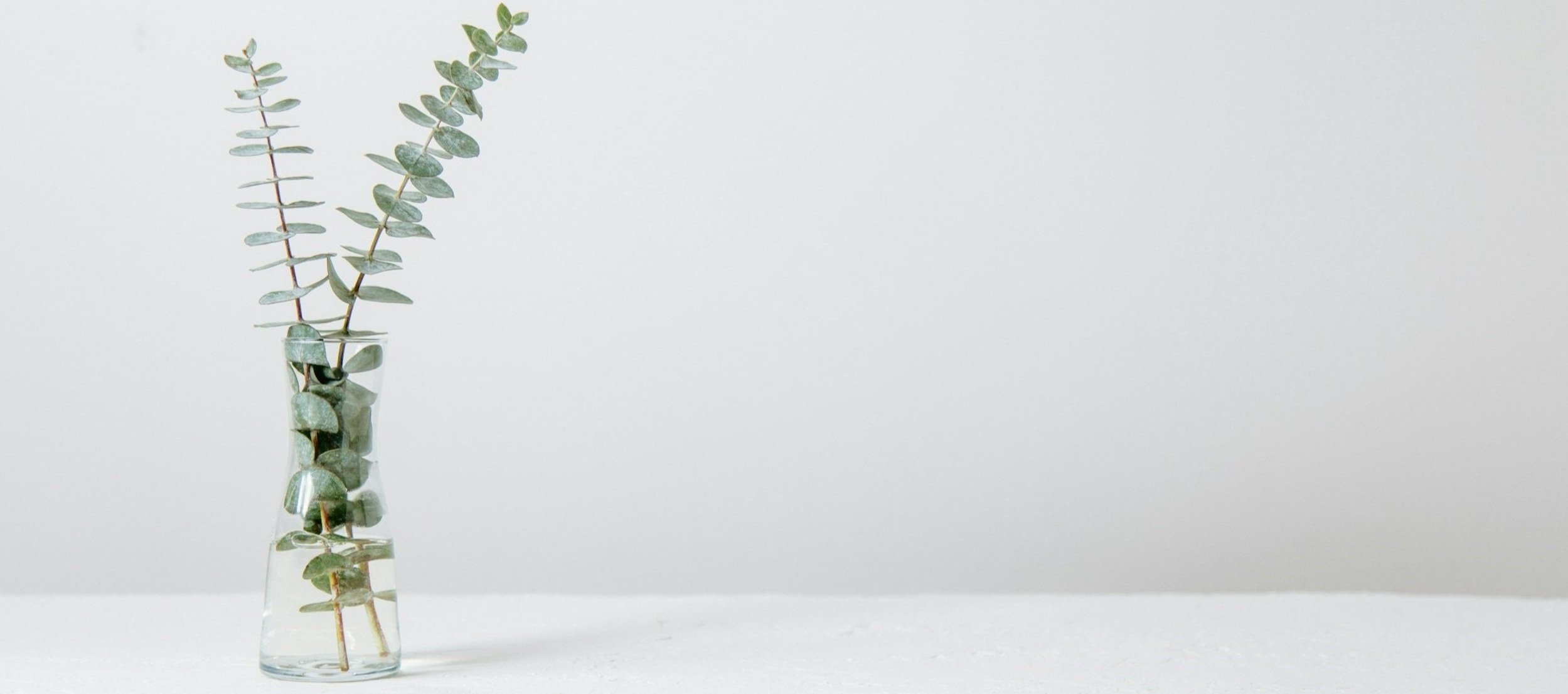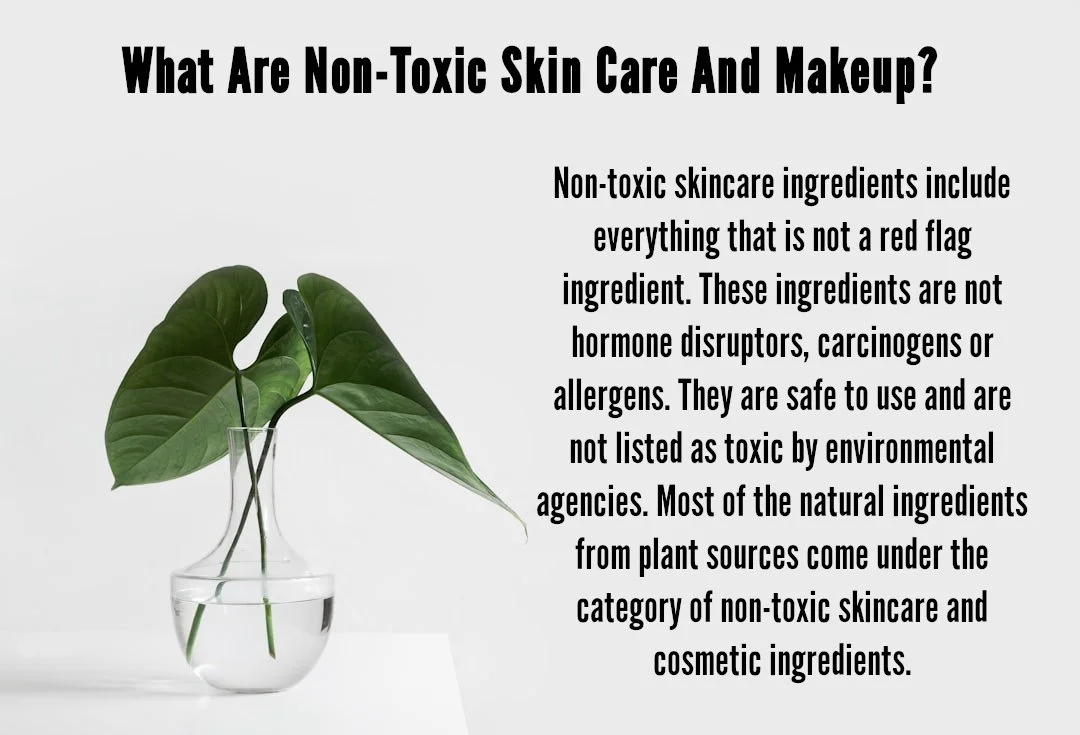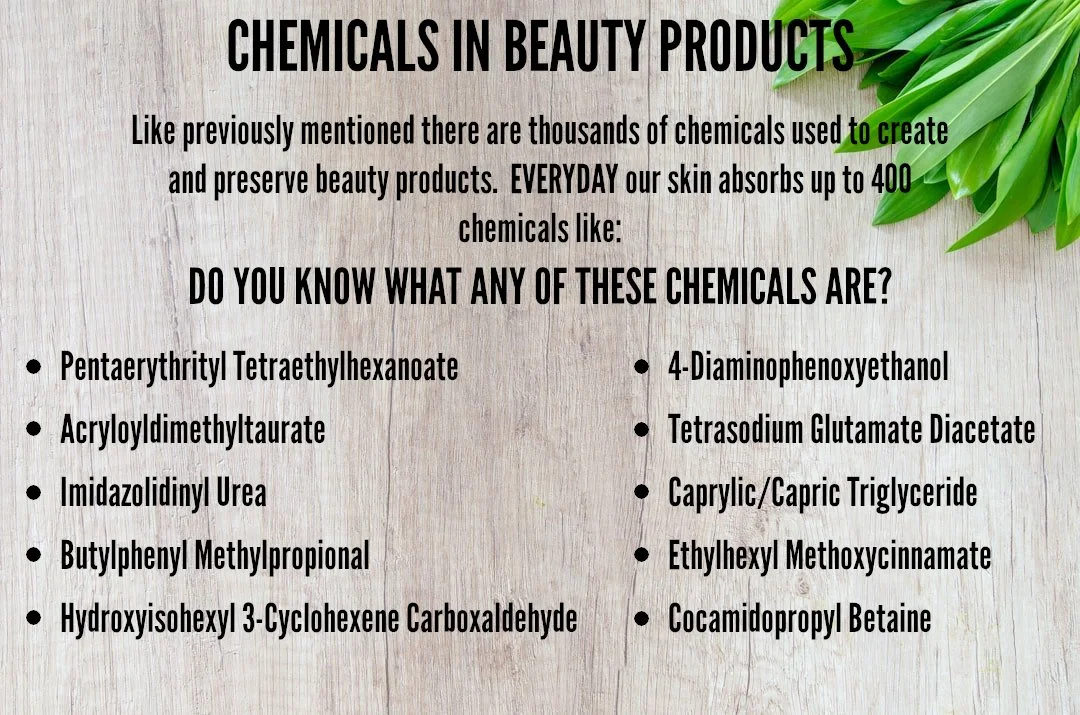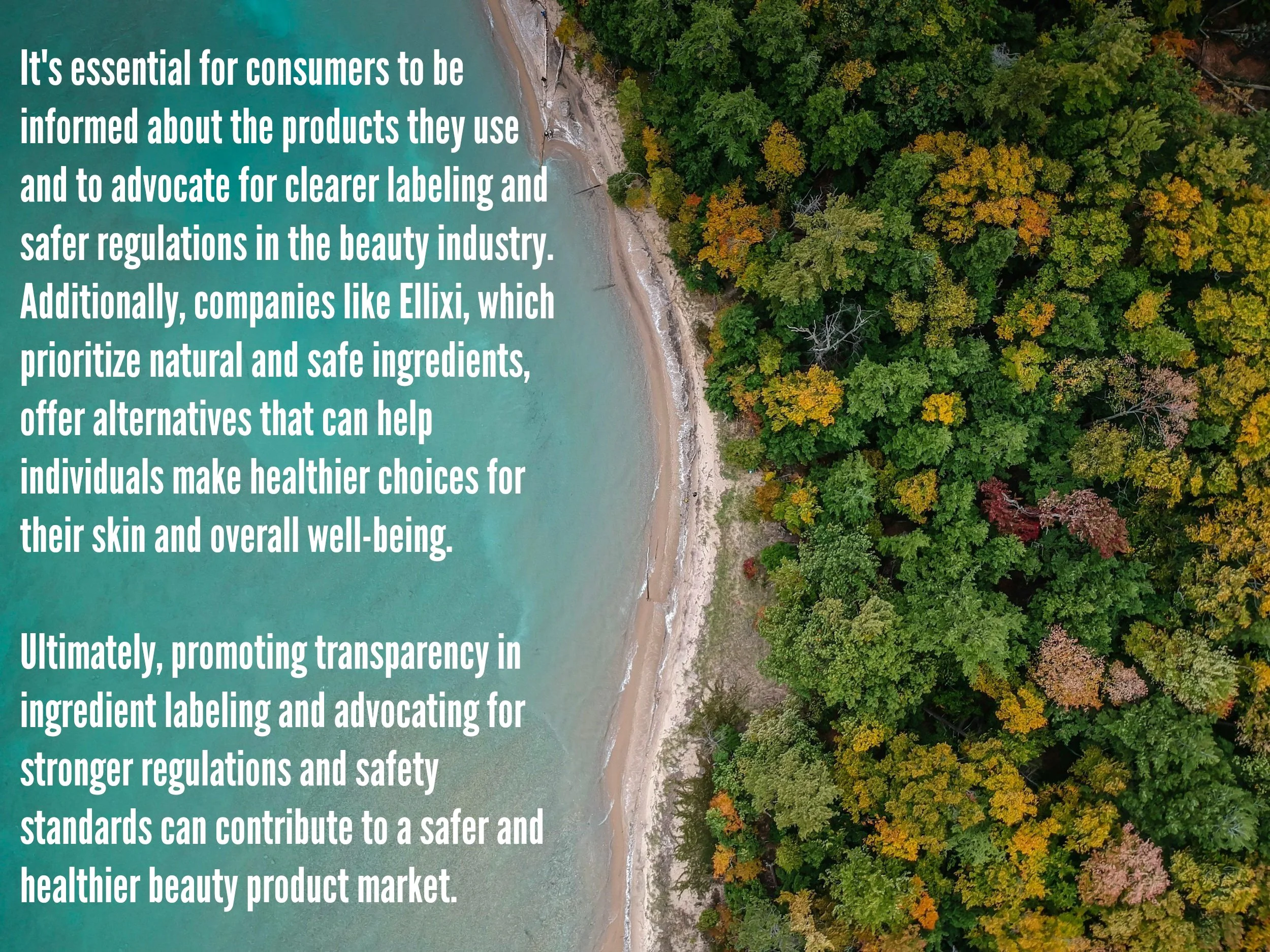
Rethink Clean Beauty
-
-
-
Ellixi has 100 products and all of them contain five or fewer 100% all natural & non-toxic ingredients. The average beauty product has 35 different chemicals and many are unknown to the average consumer. Even though we do not use water or preservatives in our products the shelf life is similar to retail products.
Cosmetics are relatively unregulated and the FDA only requires companies to not give false medical claims and not put in one of 11 known banned chemicals. So overall, there are no regulations of chemicals that can do a lot of long term harm to your body.
When purchasing new products look for signs of paraban free, cruelty free, sulfate free, phthalate free, unknown fragrances or colors, etc.
Sulfates
Sulfates are salts that are formed when sulphuric acid (H2SO4) reacts with another chemical. They are also produced from petroleum and plant sources like coconut and palm oil. They act as surfactants and are used for lathering purposes.
Sulfates can irritate your eyes and skin. They can prematurely clear off dye from your hair. There is also an ongoing debate about their use due to potential threats to the environment. Deriving them from natural sources like palm oil is causing the destruction of rainforests. When they are washed away, they can be toxic for the aquatic species.
Did You Know?
Most Mascaras available in the market contain Sulphates
Here is an overview of chemicals to watch out for:
Phthalates
Phthalates are salts or plasticizing chemicals used for the spreadability of a product. They are used in nail polishes, perfumes and lotions to name a few. Also used as softeners in shampoos, they are reproductive and developmental toxins.
Fragrance
Fragrances are found in skincare products like perfumes, moisturizers, shampoos, cleansers and conditioners. They are made with chemicals that are associated with respiratory disorders, skin allergies, dermatitis and side effects in the reproductive system.
There is no organization that restricts manufacturers from using fragrances. They do not require to reveal what’s actually inside their fragrances. Fragrances are potential carcinogens (cancer-causing agents), irritants and endocrine disruptors. So it’s time to switch to unscented products!
Toluene
Toluene is a petrochemical solvent found in most hair dyes and nail polish. They can be dangerous for your immune system and may carry the risk of birth defects and blood cancer. Refrain from using hair dyes and nail polish if you are an expectant mother as it can cause damage to the developing fetus.
Toluene can affect the human central nervous system and can lead to fatigue, headache, nausea and drowsiness.
Lead
Lead is found in lipsticks, eye-liners, foundation and whitening toothpastes. Lead is not directly added to lipsticks but is a major contaminant in colorants used in lipsticks. Love wearing lipstick to work every single day? We do, too! And we needed this reality check!
Lead is a heavy metal that is naturally found in the earth's crust. We are already exposed to enough lead in our air, food and water. The U.S. FDA (food and drugs association) regulates cosmetics and has allowed lead in 0 to 20 parts-per-million (ppm).
Polyethylene Glycol (PEG)
PEG is used as a thickening agent in skincare products like lotions, sunscreen and shampoos. It can cause cancer and respiratory disorders. It can also strip off the natural oils (sebum) from your skin and trigger the sebaceous glands (oil-producing glands) to make more sebum that can make the skin greasy.
Diethanolamine
We love the foaming cleansers, body washes and shampoos. Don't we? But are you aware of the ingredient that helps in foaming. It is diethanolamine. It is a foaming agent that is commonly found in body washes, shampoos, cleansers and bubble bath. It is a cancer-causing agent and a respiratory toxin.
Petrolatum
Petrolatum has a softening effect and is recommended for dry skin. Lip balms and moisturizers contain petrolatum. While it creates a barrier to prevent water from escaping, it also prevents absorption of moisture from the air. Your skin drys out eventually and this is the reason why you are tempted to reapply your lip balm. Also, if not refined well, harmful chemicals like polycyclic aromatic hydrocarbons (PAHs) can be retained in it.
Synthetic colors
Synthetic colors are derived from petroleum or coal tar [4]. Coal tar is made of hydrocarbons, carbon and water. It is a thick, dark and viscous liquid with a characteristic smell. Have you been looking for deeply pigmented lipsticks? Now is the time to think about what goes into these pigments. The heavier the pigment, the higher the chances of increased coal tar percentages.
Coal tar is also present in many of the commercially available eyeshadows. Synthetic colors can cause skin irritations, cancers, acne breakouts and ADHD (attention deficit hyperactivity disorder).
Triclosan
Triclosan is a common chemical found in tubes of toothpaste, antibacterial soaps and deodorants. It is effective against microbes (anti-bacterial in nature), but it is also an endocrine disruptor and a skin irritant. Some studies reported that triclosan can lead to gut inflammation and tumor growth in mammals.
Triclosan breaks down slowly and hence, is considered a potential threat to the environment. Like sulfates, triclosan too is dangerous for aquatic life.
Talc
Remember how soft talcum powder feels? This is because talc is the softest mineral occurring naturally. Talc is used to absorb moisture and is majorly found in baby powders, eye shadows, blush, deodorants and some soaps.
However, talc is directly associated with ovarian cancer. It first became a matter of concern when a woman who was using talc made by Johnson & Johnson for 35 years died of ovarian cancer. When inhaled, talc can cause lung tumors.
Parabens
Parabens are the preservatives used to keep your skincare and makeup fresh and germ-free. They are found in a variety of products, from soaps to lotions and makeup. Research shows that they cause increased production of the hormone estrogen (female sex hormone) and interfere with reproductive and brain function.
Some studies explain that parabens enter your skin and mimic estrogen that triggers excessive cell division in the breast. This eventually leads to breast cancer.
Chemicals In Sunscreens
Chemicals like PABA, benzophenone, oxybenzone, ethoxycinnmate and homosalate are used in sunscreens. They are believed to absorb light, but they cause more damage to the body instead of protecting. These sunscreen chemicals are endocrine disruptors.
Formaldehyde
Formaldehyde is often used as a preservative in skincare. It is a colorless gas and is used to prevent the growth of bacteria. Formaldehyde can be found in nail polishes, hair straightening treatments, hair gels, nail hardeners, shampoos, deodorants, lotions and makeup. It is associated with developmental toxins, hair loss, scalp burns, asthma and neurotoxicity. When inhaled, formaldehyde can cause dizziness and suffocation.
Alcohol
Alcohol is a common solvent in skincare products. It is helpful in absorbing the products better and hence, a great fit for certain creams and lotions. But alcohol is a toxic skincare ingredient. Alcohol (drying alcohol) in skincare can leave the skin dry and flaky. It disrupts the skin renewal process. However, not all alcohols are bad for your skin. Fatty alcohols are derived from natural fats and oils and are great moisturizing agents.
Hydroquinone
Hydroquinone is used in skincare for skin lightening. It is used to treat pigmentation related to acne scars, freckles, melasma, age spots and post-inflammatory hyperpigmentation. Hydroquinone functions by reducing the melanin pigment-producing cells (melanocytes).
However, hydroquinone is a known carcinogen. Prolonged use can lead to whitening of the skin, as it reduces melanocytes to a great extent.

Here’s a popular hair care product from Madison Reed. This hair dye system incorporates 4 products to touch up the color of your hair. Just take a look at these chemicals:
73 INGREDIENTS:
Root Perfection Hair Color Cream
Aqua (Water), Cetyl Alcohol, Ethanolamine, Cetearyl Alcohol, Propylene Glycol, Ceteareth-25, Toluene-2,5-Diamine Sulfate, Cocamide Mea, Oleyl Alcohol, 4-Chlororesorcinol, Ceteth-2, Cocamidopropyl Betaine, Panax Ginseng Root Extract, Argania Spinosa (Argan) Kernel Oil, Hydrolyzed Keratin, Ascorbic Acid, Butylene Glycol, Dimethicone, Disodium Edta, Sodium Chloride, Sodium Hydrosulfite, Sodium Sulfite, Xanthan Gum, P-Aminophenol, 4-Amino-2-Hydroxytoluene, 2,4-Diaminophenoxyethanol Hcl
Root Perfection Color Activator
Aqua (Water), Hydrogen Peroxide, Cetearyl Alcohol, Glycerin, Squalane, PEG-40 Hydrogenated Castor Oil, Ceteareth-20, Phosphoric Acid, Dimethicone, Disodium EDTA, Etidronic Acid, Oxyquinoline Sulfate
Therapy Hair Mask
Aqua (Water), Cetearyl Alcohol, Propylene Glycol, Cetrimonium Chloride, Amodimethicone, Caprylic/Capric Triglyceride, Argania Spinosa (Argan) Kernel Oil, Hydrolyzed Keratin, Panax Ginseng Root Extract, Panthenol, Butylene Glycol, Ethylhexylglycerin, Guar Hydroxypropyltrimonium Chloride, Sodium Chloride, Trideceth-12, Sodium Benzoate, Ethylhexyl Methoxycinnamate, Phenoxyethanol, Parfum (Fragrance), Potassium Sorbate
Cleansing Wipe
Aqua (Water), Isopropyl Alcohol, Glycerin, Polysorbate 20, Sodium Cocoyl Glutamate, Sodium Lauroyl Glutamate, Disodium Cocoyl Glutamate, Tetrasodium Glutamate Diacetate, Ethylhexylglycerin, Phenoxyethanol, Parfum (Fragrance) Pura Color

How Do I Know If A Product Contains Harmful Chemicals?
Diethanolamine is abbreviated as DEA on skincare products.
Ethanol, methanol, denatured alcohol, ethyl alcohol are all drying alcohols.
Mineral oil, benzene, paraffin wax and compounds that end in -eth are also petrolatum ingredients.
FD&C or D&C represent artificial colors. F means food and D&C means drugs and cosmetics.
Look for beauty brands that are transparent and disclose all their ingredients.
Consider natural brands that are not just safe, but also contain potent ingredients.
Don’t be quick in judging a natural brand as some of the natural, plant-derived ingredients can also turn out to be an irritant for you.
Read the labels on your skincare products before you buy them.
SLS (sodium lauryl sulfate) and SLES (sodium laureth sulfate) are the common sulfates that you spot on the labels of your shampoos and other personal care.
Chemicals under methyl, butyl, propyl classes fall under parabens.
Toluene is often labelled as benzene, phenylmethane, toluol and methylbenzene.
PEGs can be spotted as numbers like 100, 120, 14M, 30, 32, 40, 75 and so on.
Formalin, formaldehyde, glyoxal and bronopol on the labels of skincare products indicate formaldehyde.

Secrets in the Beauty Product Industry
There are very important points about the potential risks associated with the use of certain chemicals in beauty products and the variations in regulations between different regions. Here's a closer look at the concerns:
Lack of Ingredient Awareness
Many consumers are unaware of the ingredients in their beauty products and their potential effects on health. The beauty industry often uses complex chemical formulations that can be difficult for consumers to understand.
Testing and Safety
Many cosmetic ingredients are not subjected to rigorous safety testing before they are introduced to the market and none need to be FDA approved. This huge lack of comprehensive testing means that many products contain ingredients with unknown long-term health effects.
Health Risks
Some chemicals commonly found in beauty products, such as parabens, phthalates, and sulfates, have been linked to various health concerns. These may include skin irritation, allergies, endocrine disruption, and even more serious conditions like cancer.
Complex Formulations
Some beauty products contain long lists of ingredients, including synthetic fragrances and colorants. These complex formulations can make it challenging for consumers to identify potential allergens or irritants.
Disparities in Regulations
There are significant disparities in regulations governing cosmetics and personal care products around the world. For example, the EU has banned or restricted the use of over 1,300 chemicals in cosmetics, while the US has banned only a fraction (11) of that number. This variation in regulations can create confusion for consumers and potentially put their health at risk.
Consumer Advocacy
Increasing awareness of these issues has led to greater consumer advocacy for cleaner and safer beauty products. Many consumers are now seeking alternatives that use natural and organic ingredients.
Rise in Health Conditions
There has been a notable increase in various health conditions (over the past 40 years we have seen an average increase of 400% in over 20 illnesses and diseases). While it's difficult to attribute these increases solely to beauty products, it is a concern that some ingredients in these products will contribute to health issues. However, in a recent (2021) NYU study, between 90,000 – 105,000 people die each year between the ages of 50-65 based on the toxins found in beauty products.




